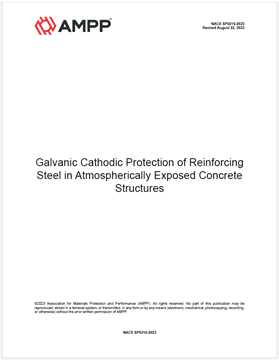Search
Products tagged with 'polarization'
View as
Sort by
Display
per page
Integrated Corrosion Analysis Software and its Application to dc Corrosion Analysis
Product Number:
51323-18819-SG
Publication Date:
2023
$20.00
NACE Publication 01116-SG, “State-of-the-Art Report on Evaluating Cathodic Protection Systems on Existing Reinforced Concrete Structures”
Product Number:
21411-SG
ISBN:
1-57590-248-2
Publication Date:
2016
$109.00
NACE SP0216-2016, “Sacrificial Cathodic Protection of Reinforcing Steel in Atmospherically Exposed Concrete Structures.”
Product Number:
21403-SG
Publication Date:
2016
$179.00
NACE SP0216-2023, Galvanic Cathodic Protection of Reinforcing Steel in Atmospherically Exposed Concrete Structures
Product Number:
NACE SP0216-2023
Publication Date:
2023
$109.00
Performance of Distributed Galvanic Anode Systems in Bridge Structures
Product Number:
51323-19214-SG
Publication Date:
2023
$20.00
The Viscosity of H2O-B(OH)3-LiOH Solutions
Product Number:
51317--9413-SG
ISBN:
9413 2017 CP
Publication Date:
2017
$20.00






